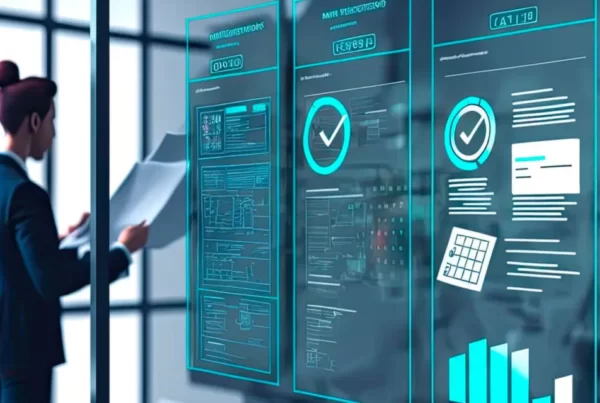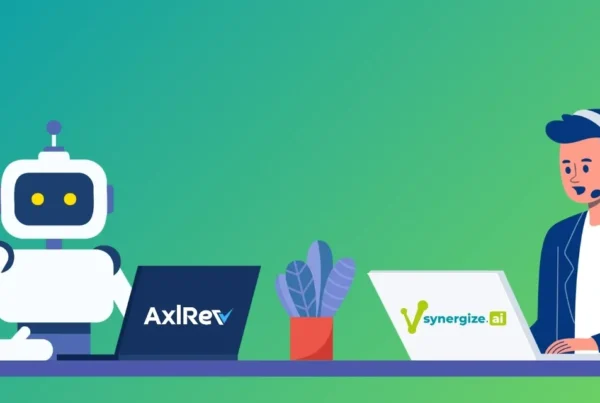
Ever wish you could predict the future? Well, predictive analytics in contact center automation is making that a reality as AI progresses. By analyzing data from customer interactions, businesses can anticipate what customers need, often before they even ask for it. Let’s break it down in simple terms.
What Is Predictive Analytics?
Think of predictive analytics like having a crystal ball, but instead of magic, it’s powered by data. In a contact center, this data comes from previous customer interactions—phone calls, emails, chats—and helps predict what’s coming next. This smart tool allows businesses to improve customer service, save time, and boost efficiency. Here’s how it works:
- Predicting Customer Needs: Imagine you’re calling a company, and before you even explain your issue, they already have a solution ready. That’s predictive analytics in action! By analyzing your past interactions, the system can guess what you might need help with and prepare a response ahead of time.
- Smart Agent Matching: Ever get transferred around before finding the right person to solve your issue? Predictive analytics can match you with the best agent for your situation based on what’s happened in the past, ensuring your problem gets fixed faster.
- Efficient Staffing: No one likes waiting on hold, especially during busy times like the holidays. By predicting when call volumes will spike, businesses can have more agents on hand, so you get help quickly when it matters most.
- Improving Customer Satisfaction: By analyzing patterns, the system can spot customers who might be getting frustrated and help fix their issues before they decide to take their business elsewhere.
In short, predictive analytics helps contact centers solve customer problems faster and smarter. But how exactly does all this magic work?
How Does It Work?
Let’s face it: we leave a lot of breadcrumbs behind when we browse online, shop, or interact with companies. Predictive analytics uses this digital footprint to make educated guesses about what customers will do next. Here’s where the data comes from:
- Browsing Data: Every time we visit a website, information is gathered about what we look at, how long we stay, and what we click. This helps businesses figure out what we’re interested in.
- Purchase History: What we buy, how often we shop, and even what we leave in our carts can help predict our future buying habits.
- Social Media Activity: Likes, shares, and comments on social media? Yep, that’s all useful data too. Companies can understand our interests, opinions, and even who influences us.
- Search Behavior: What we search for online tells companies a lot about our immediate needs and long-term interests.
- Email Engagement: Whether we open an email or click through to a product can predict how likely we are to make a purchase or take action in the future.
All this data is fed into predictive models to recognize patterns, predict trends, and improve customer interactions.
Predictive Analytics in Contact Centers: What’s the Deal?

Now, let’s zoom in on how this plays out specifically in contact centers. When you call, chat, or email customer service, predictive analytics is quietly working behind the scenes to improve your experience. Here are a few key ways it’s helping:
- Customer Interaction Data: Contact centers track every call, chat, and email to figure out common issues and predict what you might ask next. Did you call about the same problem three times? The system knows and can help fix it before it happens again.
- Omnichannel Data Collection: Whether you’re tweeting about an issue, chatting with a bot, or making a phone call, all these interactions are combined into a single picture. This helps predict how you’re likely to reach out next and ensures there’s someone ready on the right channel.
- Customer Behavior Analysis: If you’ve been browsing the help center or FAQ page before contacting support, the system can predict what your issue might be and get the right information to the agent to solve it quickly.
- Predicting Call Volume: Predictive analytics can forecast when the phones will be ringing off the hook, helping centers plan ahead so there’s enough staff to avoid long hold times.
- Customer Satisfaction and Churn Prediction: If a customer leaves negative reviews, repeatedly contacts customer service, or gives low ratings in follow-up surveys, predictive analytics can flag this as a sign they might churn (leave the company). This allows agents to step in before things go downhill.
- Agent Performance: Not only does this help customers, but it helps the agents too. By analyzing past interactions, predictive models can figure out which agents are excelling and where others may need more training.
- Smart Routing: Imagine being instantly connected with the agent most likely to solve your issue, without explaining everything from scratch. Predictive analytics can match customers with the right agent based on the type of problem they have and the agent’s expertise.
- Self-service Optimization: Ever tried using a chatbot only to get frustrated and end up calling anyway? Predictive analytics helps chatbots get smarter by analyzing past data to predict when a customer might need more help and when a simple automated response will do.
- Real-time Sentiment and Escalation Detection: One of the coolest features of predictive analytics is real-time sentiment detection. While you’re chatting or speaking with a customer service agent, the system is analyzing your tone and word choice to gauge your mood. If it detects that you’re becoming frustrated, it can trigger an alert to the agent or escalate your case to a supervisor before things get heated.
- Proactive Support and Upselling Opportunities: Predictive analytics doesn’t just wait for you to have a problem—it can actually get ahead of it. For instance, if a company notices you’ve been visiting the returns page repeatedly or had issues with a recent purchase, they can reach out proactively to offer assistance before you even ask for it. If you’re happy with your service, they might suggest relevant products or services that could enhance your experience, leading to upselling and cross-selling opportunities.
On the Final Note
Predictive analytics is transforming contact centers into smarter, faster, and more customer-focused operations. It’s not just about reacting to customer problems anymore; it’s about anticipating needs and solving issues before they even arise. By leveraging all that data from our online activities, businesses can provide a more personalized, efficient, and satisfying customer experience.
So, the next time you’re on a customer service call and it feels like the agent already knows what you’re going to ask—chances are, they kind of do!



